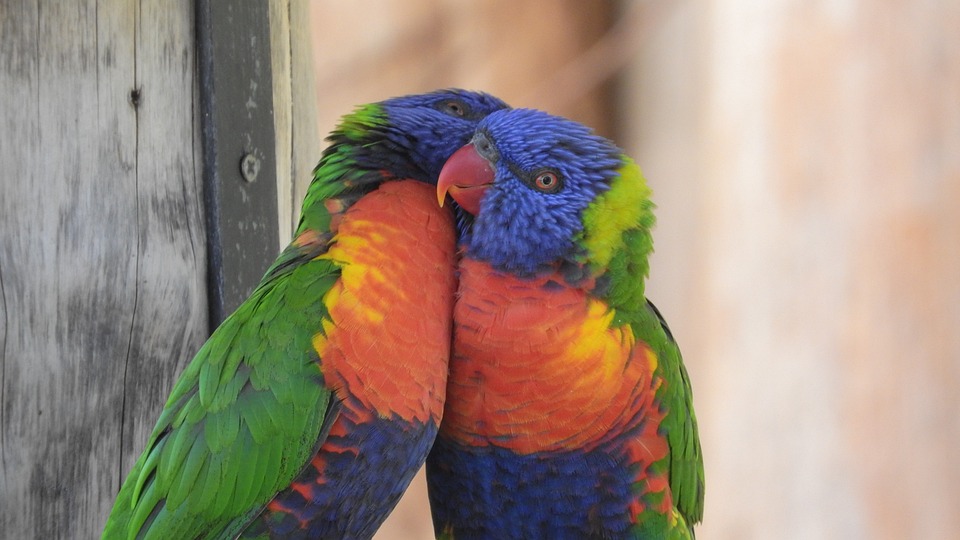Parrots are incredibly intelligent and social animals that require mental and physical stimulation to thrive. However, just like humans, they can become overexcited or overstimulated, which may lead to behavioral issues or even health problems. As a responsible parrot owner, it is crucial to understand the signs of excitement or overstimulation in your feathered friend and take necessary steps to provide a balanced and enriching environment. In this article, we will discuss the common signs of excitement or overstimulation in parrots and provide insights on how to manage these situations effectively.
Parrots are known for their vocal nature, but excessive screaming, squawking, or unusually high volume can indicate excitement or overstimulation. Your parrot may be trying to communicate its heightened state of arousal or discomfort. Pay attention if your parrot continuously fluffs its feathers, as it could be a sign of stress or agitation. Parrots are naturally energetic creatures, but if you notice an extreme increase in restlessness or hyperactivity, it may indicate overstimulation. Your parrot may display excessive movement, pacing, or wing-flapping, indicating a need to release excess energy.
Overexcitement can sometimes trigger biting or aggressive behavior in parrots. If your typically gentle parrot starts nipping or showing signs of aggression, it may be a result of excessive stimulation or excitement. Dilated pupils or rapid eye pinning can be signs of heightened excitement or arousal in parrots. Keep an eye out for these changes in your parrot’s eyes, as they can indicate that your feathered friend is reaching its threshold. Excitement or overstimulation can cause a rise in your parrot’s body temperature. Feel its feet or skin to determine if they are noticeably warmer than usual, as this can be a reliable indicator of excessive arousal.
To manage excitement or overstimulation in your parrot, it is important to create a calm environment. Provide your parrot with a designated quiet and calm area where it can retreat when feeling overstimulated. Establishing a routine is also beneficial, as parrots thrive on routine and consistency. Develop a daily schedule that includes ample time for mental and physical stimulation, rest, and relaxation. Stick to the routine as much as possible to help your parrot feel secure and reduce the likelihood of overexcitement.
Recognizing triggers is crucial in managing excitement or overstimulation in your parrot. Pay attention to the situations or stimuli that tend to trigger excitement or overstimulation in your parrot. It could be loud noises, sudden movements, certain toys, or even visitors. Once you identify the triggers, take steps to minimize or eliminate them from your parrot’s environment. Providing enrichment activities is also essential for a parrot’s well-being. Offer a variety of toys, puzzles, and foraging activities to keep your parrot engaged and mentally stimulated. Rotate the toys regularly to prevent boredom and overstimulation.
Practice positive reinforcement techniques to reward calm behavior and discourage overexcitement. Offer treats or praise when your parrot remains calm in potentially triggering situations, helping it associate calmness with positive rewards. If you are struggling to manage your parrot’s excitement or overstimulation despite your best efforts, seek professional advice. An avian veterinarian or behaviorist can provide valuable guidance tailored to your parrot’s specific needs.
Excessive excitement or overstimulation can harm your parrot’s health. It can lead to stress-related health issues such as feather plucking, digestive problems, or weakened immune systems. It is vital to create a balanced and enriched environment to prevent such complications. Differentiating between overexcitement and happiness in parrots can be done by observing the intensity and duration of behaviors. While parrots naturally get excited during playtime, it is essential to monitor their arousal levels. If you notice signs of excessive excitement or overstimulation, provide breaks and encourage calming behaviors to prevent potential issues. Parrots can be trained to manage their excitement or overstimulation through positive reinforcement training. By rewarding calm behavior and gradually desensitizing them to triggers, you can help your parrot develop self-control and coping mechanisms.
Remember, every parrot is unique, and it may take time and patience to understand and address their individual needs. By recognizing the signs of excitement or overstimulation in your parrot and implementing appropriate strategies, you can ensure a harmonious and enriching life for your feathered companion.









